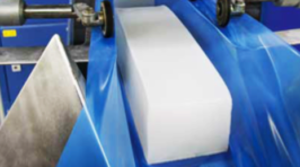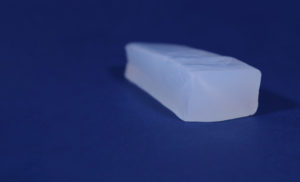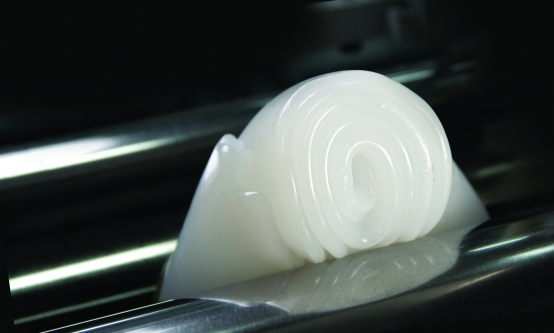This article was written by Brian Reilly, Business Development Director, Biomaterials for NuSil™–part of Avantor®
https://www.medicaldesignbriefs.com/component/content/article/mdb/features/articles/34001®
With more insight about the characteristics of this versatile silicone material, medical device manufacturers can better understand potential applications and considerations for selecting and using high-consistency rubbers in medical devices. High-consistency rubber silicone (HCR) is a versatile material with a long history of use in medical devices and other industries. Commonly found in a wide variety of end-use applications, such as tubing, balloons, sheeting, and some molded parts, HCRs consist of a high molecular weight polymer combined with silica to produce a silicone that has a clay-like consistency in its uncured form.
SILICONE AND HCRS IN MEDICAL DEVICES
Medical device manufacturers often choose silicone for use in components and devices because of its established biocompatibility pedigree, broad processing parameter ranges, and excellent physical properties. One of the earliest uses of HCRs was to create an implantable hydrocephalus shunt. Since that time, HCR use has expanded into a vast number of medical applications: both implanted and not.
 One of the key appealing characteristics of HCR is its versatility. HCRs can be processed using different types of fabrication methods, including extrusion, calendering, and compression or transfer molding. Compared to other silicone products such as liquid silicone rubber (LSR), HCRs are generally stronger materials with more robust physical properties.
One of the key appealing characteristics of HCR is its versatility. HCRs can be processed using different types of fabrication methods, including extrusion, calendering, and compression or transfer molding. Compared to other silicone products such as liquid silicone rubber (LSR), HCRs are generally stronger materials with more robust physical properties.
Another key aspect that’s appealing about HCRs is their proven history of use in countless approved implant and non-implant applications. This heritage makes it easier for medical device manufacturers to consider using HCRs for new devices or new generations of existing devices.
VERSATILITY IN HCRS
The physical properties and process considerations of HCRs are important to understand along with the advantages that both peroxide- and platinum-catalyzed solutions provide.
A key advantage of peroxide-catalyzed systems is that their curing mechanism – the cross-linking of polymers to cure the HCR – is not initiated until the HCR is exposed to heat. This means that the HCR has a very long work time which is beneficial for molding or extrusion. Larger, more intricate parts may benefit from delayed cure initiations as more time is required to fill the mold. Conversely, operations involving smaller, simpler parts may benefit from faster cure for greater throughput. Silicone HCRs can be tailored to adjust the cure rate to a given temperature for optimal performance. One consideration to be aware of is that the peroxide-catalyzed systems call for a post-curing process to remove residual byproducts.
The “random” cross-linking of peroxide-cure HCRs provides unique elastomeric properties that can be useful in balloons, or similar applications where “tension set” is an important property. If a balloon needs the ability to be inflated and then, when deflated, to return to its original shape, a peroxide-cure HCR may provide the best solution. Similarly, in peristaltic pump applications, the silicone tubing may be faced with cycles of repeated compression and relief.
Platinum-catalyzed systems typically consist of a Part A component, which contains the platinum catalyst, and a Part B portion that contains hydride-functional cross-linkers and cure inhibitors. Once the two parts are combined, the HCR retains its pre-cure consistency for one to two hours. A key advantage of using platinum-catalyzed HCRs is the ability to heat-accelerate the cure, allowing for faster cure times and increased throughput with the added benefit of no corrosive byproducts. Platinum-catalyzed HCRs typically yield much higher physical properties than traditional peroxide-catalyzed HCRs, which may be valuable for specific medical device applications that use molded or extruded components.
HCR PROCESSING FOR MEDICAL DEVICE FABRICATION
It is helpful to know that when using HCRs, certain steps must be taken depending on the fabrication methods. For example, prior to molding or extruding, HCRs need to be processed with a two-roll mill. The mill softens and mixes the material on cylinders spinning in opposite directions at slightly different speeds to impart shear to the material. This modifies the consistency of the HCR, making it softer and able to flow more easily through the die or into the intricate area of the mold.
If the HCR is a two-part material, Parts A and B need to be separately softened on a cooled mill before being combined. This ensures that the heat of milling does not prematurely trigger curing once the two parts are combined. If the HCR is a one-part material, it will also need to be softened on the mill prior to use.
 Different end-use applications call for different fabrication methods. For example, if a device manufacturer is producing a Foley catheter, or another medical device that incorporates silicone tubing, the most efficient method of production would be extrusion. Once the processing method is established, there are further, more specific requirements associated with the tubing that need to be determined: What properties should the tube have? Does it need to be soft and flexible, or stiff and rigid? Is there a tensile strength or modulus requirement? These and other factors can help decide whether a device is produced using a peroxide cure or platinum-cure system.
Different end-use applications call for different fabrication methods. For example, if a device manufacturer is producing a Foley catheter, or another medical device that incorporates silicone tubing, the most efficient method of production would be extrusion. Once the processing method is established, there are further, more specific requirements associated with the tubing that need to be determined: What properties should the tube have? Does it need to be soft and flexible, or stiff and rigid? Is there a tensile strength or modulus requirement? These and other factors can help decide whether a device is produced using a peroxide cure or platinum-cure system.
The broad processing parameters of silicone elastomers make them ideal for molding. For molded products, like hydrocephalic shunts, consideration needs to be given to the performance of the valve mechanism in the shunt. With this type of molded product, the device manufacturer will seek to select an HCR that can reliably provide the proper modulus, tension set and other elastomeric properties to ensure the valve functions properly.
HCRs are often calendered into flat sheets that may be die cut. A major application for this type of processing method is a gasket used as a seal in the overall medical device. By using a peroxide-cure HCR, it’s possible to create gaskets that have self-adhering properties. If stored properly, an uncured peroxide HCR sheet has almost infinite shelf life. A supplier could fabricate the sheet, package it and ship it to another manufacturer who die-cuts the gaskets which are pressed in place and then cured to provide the complete seal.
KEY FACTORS FOR USING HCRS
The versatile material properties, processing features, and cure options that HCRs offer make them well-suited for a broad range of medical device applications. There are several factors that device designers and fabricators should consider when choosing HCRs for their next project.
Integration/interaction with other materials: One of the advantages that HCRs offer is the ability to incorporate additives into the formulation prior to curing for special medical device purposes. For example, some device manufacturers may seek to use additives, such as colorants, radiopaque fillers, antimicrobial agents, or even active pharmaceutical ingredients (APIs) into the device.
It’s also important to consider how these additives or other materials within the medical device interact with the silicone material and the molding process, in terms of chemical and mechanical behavior. If any of the additives are temperature-sensitive (i.e., degrade after exposure to high temperatures) or adversely interact with formulary components resulting in an incomplete cure, the silicone supplier may be able to provide custom solutions to address the issue.
It is essential to avoid cross contamination. Platinum-cured HCRs, like other platinum-cured silicones, can be negatively impacted by chemicals that may come into contact with the silicone prior to curing. These contaminants can partially or completely inhibit the platinum-catalyzed cure system. Most inhibitors typically have a sulfur-containing material (e.g., natural rubber, latex and neoprene), a nitrogen-containing material (e.g., amines) or an organotin-containing material (e.g., condensation-cured silicones). In order to prevent contamination, clean manufacturing practices should be followed. This includes having dedicated instruments like spatulas for subdividing HCR and cleaning all surfaces between uses.
Flexibility in HCRs is equally important. Since no two medical devices or fabrication processes are exactly the same, leading-edge silicone providers will have solutions that provide greater flexibility for the manufacturing process. NuSil, for example, offers a three-part optimization system that device manufacturers can use to modify the material on the production floor. Device engineers can optimize process requirements, such as work time and cure profile, by varying the ratios of three components, rather than modifying their production systems and equipment to match the HCR’s properties.
FINAL CONSIDERATIONS FOR HCR SELECTION
There is a great advantage gained when working with a silicone supplier with extensive experience providing HCRs to the medical device community. Material suppliers that can demonstrate expertise in working with regulatory authorities, along with a focus on supplying materials specifically for medical device applications, can help clear regulatory hurdles efficiently.
Important credentials to consider when evaluating suppliers include whether they have a robust quality system with ISO 9001 certification, deep knowledge of ISO 13485 quality management requirements for medical systems, and experience with the U.S. Food and Drug Administration (FDA) Master File submissions (MAFs).
And, while FDA’s 21 CFR Part 820 Quality System Regulations for Medical Device Current Good Manufacturing Practices (cGMP) only recommend that a material supplier or parts manufacturer meets its outlined requirements, a medical device manufacturer should work with a partner that can provide support throughout the entire design and regulatory submission process. A materials partner that has established relationships with regulatory bodies can prove invaluable and save a device manufacturer time and money, while navigating the path of getting a device to market.

